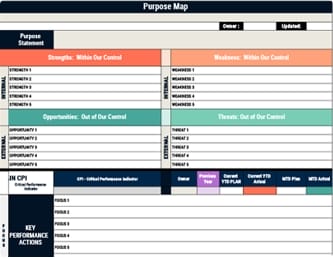When navigating the ever-evolving business landscape, you might find traditional planning methods somewhat restrictive, akin to wearing shoes that are just a bit too tight. This is where connected business models shine, offering an integrated approach that breaks down silos and leverages data for strategic advantage. With technology as your ally, you’re poised to craft real-time, customer-centric strategies that not only foster sustainable growth but also ensure your organization stays agile and competitive. Curious to know more?
Key Takeaways
- Connected models unify data across departments, eliminating silos and enhancing decision-making accuracy.
- Traditional planning lacks flexibility, restricting adaptability and efficiency compared to connected models.
- Connected models leverage real-time data for personalized user experiences, enhancing value creation.
- Scalability in connected models is achieved through digital platforms, unlike traditional models facing physical resource constraints.
- Integration fosters innovation and collaboration, enabling rapid market adaptation and strategic growth.
The Essence of Connected Business Models
When exploring the essence of connected business models, it’s essential to understand how they leverage technology to unify data across departments, creating a single source of truth that enhances decision-making accuracy.
By eliminating data silos, these models ensure consistency, enabling you to make well-informed decisions. Connected business models prioritize data governance and integrated business planning, allowing real-time access to information and improving your ability to conduct what-if scenarios.
This connectivity fosters a collaborative culture, enhancing team communication, which leads to better forecasts and more effective planning. Additionally, by simplifying workflows, these models focus on data analysis rather than technical constraints.
Ultimately, embracing connected business models supports sustainable growth and strategic planning, offering a proactive approach to evolving business challenges.
Traditional Planning: A Legacy Approach
In contrast to the seamless integration offered by connected business models, traditional planning methods often rely on linear processes that can restrict flexibility and adaptability.
These traditional approaches focus heavily on controlling inputs, production, and distribution, leading to inefficiencies, especially when significant investments in physical assets are involved.
Planning processes in such systems are plagued by information silos, as data is often stored locally in Excel files. This results in multiple, conflicting versions of forecasts across departments.
Moreover, traditional models typically hold Integrated Business Planning (IBP) meetings as infrequent, periodic reviews, which delays operational responses.
Consequently, the inability to quickly adapt to market changes due to outdated systems limits your organization’s agility and leaves you vulnerable to more innovative competitors.
Key Differences in Value Creation
Although both traditional and connected business models aim to create value, they diverge significantly in their approaches and outcomes. Traditional models focus on a straightforward value proposition through producing and selling goods or services, optimizing efficiency and profits along linear value chains.
In contrast, connected business models, like those used by platforms such as Airbnb and Spotify, create value by facilitating interactions between users and providing secure transaction infrastructures. These models leverage data network effects, using real-time user data to enhance service offerings, personalize user experiences, and refine decision-making processes.
Unlike traditional firms that primarily use data for internal operations, connected models position data as a central component of their value proposition, allowing them to adapt swiftly to user needs and market trends.
Scalability: Traditional vs. Connected Models
While traditional business models often encounter scalability issues due to their reliance on substantial investments in physical resources like factories and retail spaces, connected business models thrive on their ability to grow rapidly without such constraints.
By leveraging digital platforms and cloud-based technologies, these models enhance scalability, allowing businesses to expand swiftly and efficiently. The inherent network effects in connected business models mean that as more users join, the platform’s value increases, creating a self-reinforcing growth cycle.
Additionally, data utilization plays a crucial role in connected models, enhancing decision-making and operational flexibility. This allows businesses to quickly adapt to market changes and scale operations based on real-time insights, a significant advantage over traditional models that struggle with physical limitations.
Leveraging Data for Strategic Advantage
To gain a strategic advantage in today’s market, businesses must harness the power of data, which connected business models do exceptionally well by leveraging real-time data visibility.
With seamless integration, you can enhance decision-making by swiftly adjusting strategies to meet market shifts and consumer needs. Unlike traditional planning, which often struggles with data silos and outdated forecasts, connected models empower you with dynamic planning tools.
These tools enable what-if scenarios, fostering proactive strategy adjustments and boosting operational agility. By leveraging data, you can personalize customer experiences, as platforms like Spotify demonstrate, refining algorithms through user-generated insights.
Furthermore, shared data insights improve interdepartmental communication, aligning everyone towards common business goals, ensuring your organization stays ahead in the competitive landscape.
Risk Management in a Connected Framework
In the realm of risk management, adopting a connected business model transforms how organizations anticipate and respond to potential threats. By leveraging real-time data, you’re empowered to spot disruptions swiftly, moving beyond the limitations of outdated, siloed information found in traditional systems.
Integrated frameworks provide a consistent view of risks, enabling proactive assessment through continuous monitoring and analysis. This approach lets you run what-if scenarios, anticipating market changes and adjusting strategies effectively.
Cross-functional collaboration further enhances risk management, as all stakeholders access the same data, minimizing misalignment. Real-time data governance ensures accurate, consistent information, boosting decision-making confidence.
The Role of Technology in Business Evolution
Building on the principles of risk management in a connected framework, technology plays a pivotal role in the evolution of business models. By leveraging cloud computing, you can achieve rapid scalability without hefty upfront investments, especially beneficial for platform businesses.
The integration of AI and machine learning enhances your operational efficiency, allowing you to harness data for more personalized customer experiences and make proactive decisions. Through connected planning platforms, you gain real-time data visibility, which fosters collaboration across departments, enabling swift responses to market changes and optimizing forecasting accuracy.
Embracing Customer-Centric Strategies
When you embrace customer-centric strategies, you place your customers at the heart of every decision, ensuring your business evolves to meet their needs and preferences.
By focusing on customer experience, you’re acknowledging the significant influence consumers have, with 73% considering it crucial when making purchases.
Personalization plays a vital role here; by using data to customize offerings, you boost loyalty, with 80% of consumers more likely to buy when experiences are tailored.
Subscription models, like Netflix’s, enhance engagement and stability, fostering ongoing loyalty.
Additionally, building customer communities strengthens brand loyalty, offering essential insights as 57% of consumers prefer engaging with interactive brands.
Ultimately, adopting a customer-centric approach can lead to 60% higher profits, proving its value.
Collaborative Partnerships and Alliances
Although traditional planning has its merits, collaborative partnerships and alliances offer distinct advantages by enabling organizations to share resources and capitalize on each other’s strengths.
By forming these alliances, you can enhance innovation through the blending of diverse expertise and perspectives, leading to the creation of novel products and services that address evolving market demands.
Enhance innovation by blending diverse expertise to create novel products for evolving market demands.
Furthermore, strategic partnerships improve market access, allowing you to reach new customers and territories faster than traditional methods.
Collaboration also results in cost savings by pooling resources, reducing overhead, and streamlining supply chain processes.
To ensure success, maintaining clear communication, trust, and aligned goals is crucial. These elements help you overcome challenges and fully realize the mutual benefits that such partnerships provide, setting the stage for sustainable growth.
Future Trends in Business Model Innovation
As the business landscape evolves, future trends in business model innovation will increasingly harness the power of artificial intelligence and machine learning to enhance efficiency and decision-making.
You’ll see companies embracing hybrid business models that blend online and offline strategies, adapting to shifting consumer behaviors.
Data analytics will play a pivotal role, enabling businesses to personalize customer interactions and foster loyalty.
To stay competitive, you’ll need to incorporate sustainability into your business practices, appealing to eco-conscious consumers.
Collaborative partnerships will be crucial, allowing you to share resources and expertise, expanding your market reach.
Frequently Asked Questions
What Is the Key Difference Between Traditional and Digital Business Models?
The key difference between traditional and digital business models lies in their approach to value creation and data utilization.
You’ll find that traditional models focus on linear value chains and require heavy investments in physical assets, leading to siloed information and slower decision-making.
In contrast, digital models emphasize network effects, scalability, and proactive decision-making through real-time data visibility, often using technology to enhance user experiences and foster ongoing customer engagement and loyalty.
What Is the Connection Between Business Model and Business Plan?
A business model and a business plan must connect seamlessly to ensure success.
Imagine launching a new coffee shop: your business model outlines how you’ll attract customers with unique brews, while the business plan details the steps, like marketing and supply chain management, to achieve this.
What Are the Advantages of Traditional Business Model?
In a traditional business model, you gain advantages like established brand recognition, which helps maintain customer loyalty.
You benefit from economies of scale, as mass production reduces costs per unit. Your operations are predictable due to structured value chains that emphasize control over inputs and distribution.
With significant investments in physical assets, such as factories, you’ve got a tangible market presence.
Additionally, clear regulatory frameworks simplify adherence to industry regulations, ensuring compliance.
What Is the Difference Between Traditional Business Model and Modern Business Model?
You can distinguish between traditional and modern business models by looking at how they generate value and engage customers.
Traditional models rely on linear value chains and physical assets, often operating with siloed data and limited customer interaction.
In contrast, modern models leverage digital platforms and real-time data, promoting user interactions and personalized experiences.
They grow rapidly through network effects without heavy physical investments, using advanced analytics to stay agile and competitive.
Conclusion
You’re probably thinking that shifting to a connected business model sounds complicated, but it’s actually a strategic move that pays off in the long run. By integrating data and technology, you can break down silos and respond more swiftly to market changes, giving you a competitive edge. While traditional planning might feel familiar, it often limits growth and adaptability. Embracing a connected approach enables you to create personalized experiences and scale rapidly, ensuring your business thrives in a digital world.



